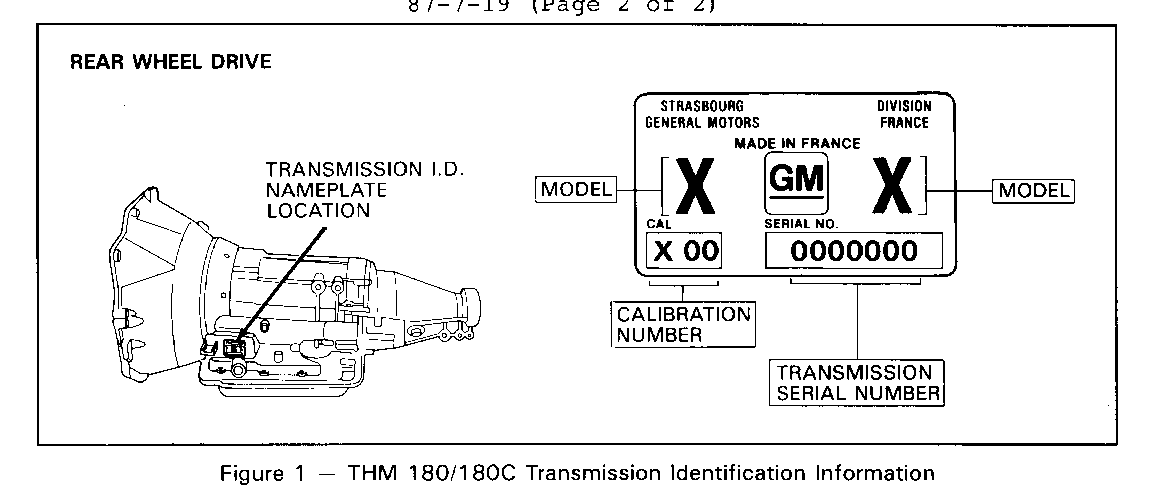SLIPPING OR NO UPSHIFT BURNED 2ND CLUTCH

1981-87 T1000 MODELS EQUIPPED WITH THM 180/180C TRANSMISSIONS (MD3/MD2)
TRANSMISSION MODELS:
ND, NS, VN, ST, VQ, TN, TP, PR, UR
BULLETIN COVERS:
A 1981 through 1987 THM 180/180C transmission (refer to Figure 1) may exhibit a slipping or no upshift condition due to a burned second clutch. The burned second clutch may be due to distortion of the valve body spacer plate which results in loss of second clutch apply pressure. The valve body spacer plate may become distorted when the vacuum pipe fitting (refer to Figure 2) becomes blocked by carbon at the engine intake manifold. As the fitting is blocked off, the second clutch check ball vibrates back and forth against the spacer plate causing the distortion.
SERVICE ACTION:
To service a THM 180/180C transmission for a slipping or no upshift condition, inspect and replace as necessary, the second clutch plates, third clutch plates, the valve body spacer plate and gaskets. Check the vacuum modulator, using J 24466 Modulator Checking Tool; and clean the vacuum pipe fitting assembly. To clean the vacuum pipe fitting assembly: remove the fitting from the intake manifold and clean the orifice using a 7/16" drill bit (turning drill bit by hand) . Carburetor cleaner may be used to loosen carbon deposits if needed. Notice: To prevent a vacuum leak when reinstalling the fitting, use pipe sealant, service part number 1052080, around the threads.
SERVICE NOTE:
Any time transmission service is performed on a TIOOO model equipped with a THM 180/180C transmission, the vacuum pipe fitting assembly should be inspected and cleaned.
SERVICE MANUAL REFERENCE:
Refer to Second and/or Third Clutch Assembly section of the THM 180C Unit Repair Service Manual.
SERVICE DEPARTMENT PONTIAC DIVISION GENERAL MOTORS CORPORATION


General Motors bulletins are intended for use by professional technicians, not a "do-it-yourselfer". They are written to inform those technicians of conditions that may occur on some vehicles, or to provide information that could assist in the proper service of a vehicle. Properly trained technicians have the equipment, tools, safety instructions and know-how to do a job properly and safely. If a condition is described, do not assume that the bulletin applies to your vehicle, or that your vehicle will have that condition. See a General Motors dealer servicing your brand of General Motors vehicle for information on whether your vehicle may benefit from the information.
